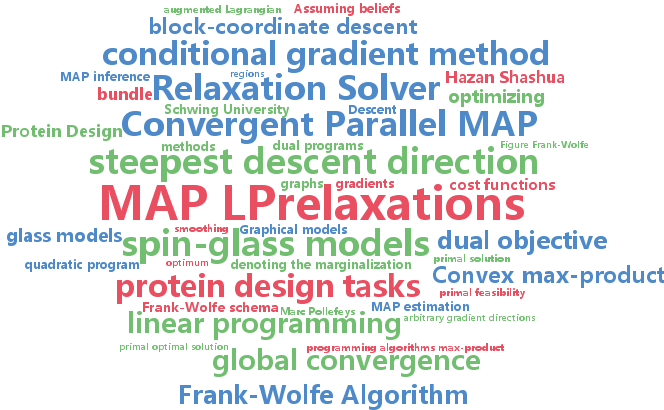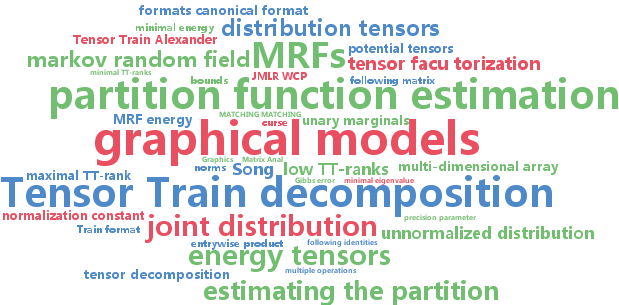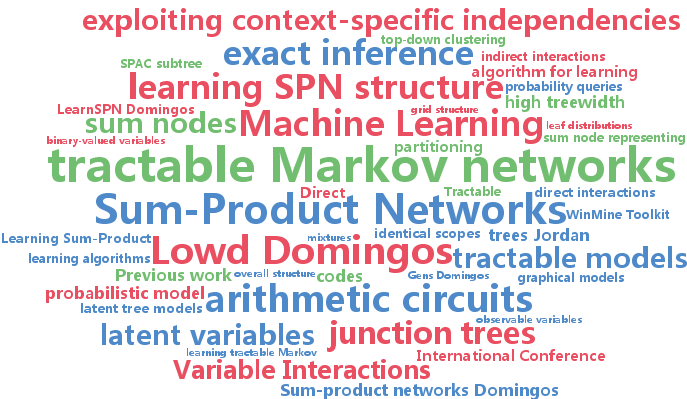graphical models
-
Alexander Schwing and Tamir Hazan and Marc Pollefeys and Raquel Urtasun
Globally Convergent Parallel MAP LP Relaxation Solver using the Frank-Wolfe Algorithm (pdf)
While MAP inference is typically intractable for many real-world applications, linear programming relaxations have been proven very effective. Dual block-coordinate descent methods are among the most efficient solvers, however, they are prone to get stuck in sub-optimal points. Although subgradient approaches achieve global convergence, they are typically slower in practice. To improve convergence speed, algorithms which compute the steepest $\epsilon$-descent direction by solving a quadratic program have been proposed. In this paper we suggest to decouple the quadratic program based on the Frank-Wolfe approach. This allows us to obtain an efficient and easy to parallelize algorithm while retaining the global convergence properties. Our method proves superior when compared to existing algorithms on a set of spin-glass models and protein design tasks.
-
Alexander Novikov and Anton Rodomanov and Anton Osokin and Dmitry Vetrov
Putting MRFs on a Tensor Train (pdf)
In the paper we present a new framework for dealing with probabilistic graphical models. Our approach relies on the recently proposed Tensor Train format (TT-format) of a tensor that while being compact allows for efficient application of linear algebra operations. We present a way to convert the energy of a Markov random field to the TT-format and show how one can exploit the properties of the TT-format to attack the tasks of the partition function estimation and the MAP-inference. We provide theoretical guarantees on the accuracy of the proposed algorithm for estimating the partition function and compare our methods against several state-of-the-art algorithms.
-
Wei Ping and Qiang Liu and Alex Ihler
Marginal Structured SVM with Hidden Variables (pdf)
In this work, we propose the marginal structured SVM (MSSVM) for structured prediction with hidden variables. MSSVM properly accounts for the uncertainty of hidden variables, and can significantly outperform the previously proposed latent structured SVM (LSSVM; Yu & Joachims (2009)) and other state-of-art methods, especially when that uncertainty is large. Our method also results in a smoother objective function, making gradient-based optimization of MSSVMs converge significantly faster than for LSSVMs. We also show that our method consistently outperforms hidden conditional random fields (HCRFs; Quattoni et al. (2007)) on both simulated and real-world datasets. Furthermore, we propose a unified framework that includes both our and several other existing methods as special cases, and provides insights into the comparison of different models in practice.
-
Amirmohammad Rooshenas and Daniel Lowd
Learning Sum-Product Networks with Direct and Indirect Variable Interactions (pdf)
Sum-product networks (SPNs) are a deep probabilistic representation that allows for efficient, exact inference. SPNs generalize many other tractable models, including thin junction trees, latent tree models, and many types of mixtures. Previous work on learning SPN structure has mainly focused on using top-down or bottom-up clustering to find mixtures, which capture variable interactions indirectly through implicit latent variables. In contrast, most work on learning graphical models, thin junction trees, and arithmetic circuits has focused on finding direct interactions among variables. In this paper, we present ID-SPN, a new algorithm for learning SPN structure that unifies the two approaches. In experiments on 20 benchmark datasets, we find that the combination of direct and indirect interactions leads to significantly better accuracy than several state-of-the-art algorithms for learning SPNs and other tractable models.



